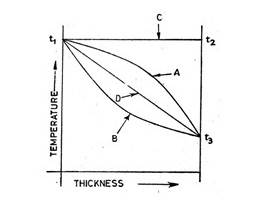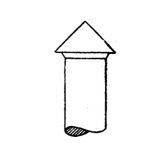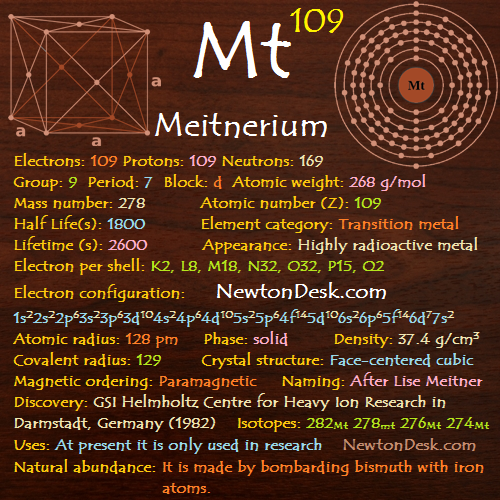SSC Junior Engineers (JE) Exam held on 4th March 2017 Morning Shift (General Engineering)
Q 1 – According to the Gay-Lussac law for a perfect gas, the absolute pressure of given mass varies directly as
Options:
1) temperature
2) absolute temperature
3) absolute temperature, if volume is kept constant
4) volume, if temperature is kept constant
Answer: absolute temperature, if volume is kept constant
Q 2 – Which of the following can be regarded as gas so that gas laws could be applicable, within the commonly encountered temperature limits.
Options:
1) O2, N2, steam, CO2
2) O2, N2, water vapour
3) SO2, NH3, CO2, moisture
4) O2, N2, H2, air
Answer: O2, N2, H2, air
Q 3 – Temperature of a gas is produced due to
Options:
1) its heating value
2) kinetic energy of molecules
3) repulsion of molecules
4) attraction of molecules
Answer: kinetic energy of molecules
Q 4 – The pressure of a gas in terms of its mean kinetic energy per unit volume E is equal to
Options:
1) E/3
2) E/2
3) 3E/4
4) 2E/3
Answer: 2E/3
Q 5 – According to Boyle’s law for a perfect gas
Options:
1) T2/T1 = P2/P1, if V is kept constant
2) T2/T1 = V2/V1, if P is kept constant
3) P1/P2 = V2/V1, if T is kept constant
4) None of these
Answer: P1/P2 = V2/V1, if T is kept constant
Q 6 – Boyle’s law i.e. pV= constant is applicable to gases under
Options:
1) all ranges of pressures
2) only small range of pressures
3) high range of pressures
4) steady change of pressures
Answer: only small range of pressures
Q 7 – According to which law, all perfect gases change in volume by (1/273)th of their original volume at 0° C for every 1°C change in temperature when pressure remains constant
Options:
1) Joule’s law
2) Boyle’s law
3) Regnault’s law
4) Charles’ law
Answer: Charles’ law
Q 8 – In the figure given below, curve A will be applicable when thermal conductivity of the material.
Options:
1) increases with increase in temperature
2) decreases with increase in temperature
3) is very large
4) is constant at all the temperatures
Answer: increases with increase in temperature
Q 9 – In order that a cycle be reversible, following must be satisfied
Options:
1) free expansion or friction resisted expansion/compression process should not be encountered
2) when heat is being absorbed, temperature of hot source and working substance should be same
3) when heat is being rejected, temperature of cold source and working substance should be same
4) All options are correct
Answer: All options are correct
Q 10 – Which of the following parameters remains constant during ideal throttling process
Options:
1) pressure
2) temperature
3) volume
4) enthalpy
Answer: enthalpy
Q 11 – Maximum work by an expansion of a gas in a closed system is possible when process takes place at constant
Options:
1) pressure
2) temperature
3) volume
4) enthalpy
Answer: pressure
Q 12 – In an isothermal process, the internal energy
Options:
1) increases
2) decreases
3) remains constant
4) first increases and then decreases
Answer: remains constant
Q 13 – Which of the following represents the perpetual motion of the first kind
Options:
1) engine with 100 % thermal efficiency
2) a full reversible engine
3) transfer of heat energy from low temperature source to high temperature source
4) a machine that continuously creates its own energy
Answer: a machine that continuously creates its own energy
Q 14 – The door of a running refrigerator inside a room was left open. Which of the following statement is correct?
Options:
1) The room will be cooled to the temperature inside the refrigerator
2) The room will be cooled slightly
3) The room will be gradually warmed up
4) The temperature of the air in the room will remain unaffected
Answer: The room will be gradually warmed up
Q 15 – A perfect gas at 27° C was heated until its volume was doubled. The temperature of the gas will now be
Options:
1) 270° C
2) 540° C
3) 327° C
4) 729° C
Answer: 327° C
Q 16 – For same compression ratio and for same heat added
Options:
1) Otto cycle is more efficient than Diesel cycle
2) Diesel cycle is more efficient than Otto cycle
3) efficiency depends on other factors
4) both Otto and Diesel cycles are equally efficient
Answer: Otto cycle is more efficient than Diesel cycle
Q 17 – The efficiency of Diesel cycle with decrease in cut off
Options:
1) increases
2) decreases`
3) remains unaffected
4) first increases and then decreases
Answer: increases
Q 18 – The ideal efficiency of an Ericsson cycle with perfect regeneration and operating between two given temperature limits is
Options:
1) equal to Joule cycle
2) equal to Carnot cycle
3) equal to Brayton cycle
4) less than Carnot cycle
Answer: equal to Carnot cycle
Q 19 – A steam nozzle converts______.
Options:
1) kinetic energy into heat
2) heat energy into potential energy
3) potential energy into heat
4) heat energy into kinetic energy
Answer: heat energy into kinetic energy
Q 20 – Which is the wrong assumption for calculation of air standard efficiency?
Options:
1) All processes are reversible
2) Specific heat remains constant at all temperatures
3) No account of the mechanism of heat transfer is considered
4) Gases dissociate at higher temperatures
Answer: Gases dissociate at higher temperatures
Q 21 – Calculate the enthalpy of 3 kg of fluid that occupies a volume of 1.5 m3, if the internal energy is 3.5 M Joules/kg and the pressure is 0.3 MN/m2
Options:
1) 3.95 MJ
2) 3.65 MJ
3) 10.95 MJ
4) None of these
Answer: None of these
Q 22 – When a process undergoes a complete cycle then the change of entropy will be
Options:
1) + ve value
2) – ve value
3) zero value
4) + ve or – ve value depending on initial condition
Answer: zero value
Q 23 – Following relationship defines the Gibb’s free energy G
Options:
1) G = H + TS
2) G = H – TS
3) G = U + TS
4) F = U – TS
Answer: G = H – TS
Q 24 – During a process on the closed system its internal energy increases by twice the units than the heat added to it. It is possible due to
Options:
1) radiation of heat from surroundings
2) lowering of the temperature
3) increasing of the temperature
4) performing of shaft work on the system
Answer: performing of shaft work on the system
Q 25 – Fusion curve on p-t diagram for all substances possesses the following slope
Options:
1) zero
2) infinity
3) positive
4) variable
Answer: variable
[sociallocker]
Q 26 – When heat is transferred from one particle of hot body to another by actual motion of the heated particles, it is referred to as heat transfer by:
Options:
1) conduction
2) convection
3) radiation
4) conduction and convection
Answer: conduction
Q 27 – Which of the following is a case of steady state heat transfer?
Options:
1) I.C. engine
2) Air preheaters
3) Heating of building in winter
4) None of these
Answer: None of these
Q 28 – The time constant of a thermocouple is
Options:
1) the time taken to attain the final temperature to be measured
2) the time taken to attain 50 % of the value of initial temperature difference
3) the time taken to attain 63.2% of the value of initial temperature difference
4) determined by the time taken to reach 100°C from 0°C
Answer: the time taken to attain 63.2% of the value of initial temperature difference
Q 29 – Which of the following is expected to have highest thermal conductivity
Options:
1) steam
2) solid ice
3) melting ice
4) water
Answer: solid ice
Q 30 – The rate of energy emission from unit surface area through unit solid angle, along a normal to the surface, is known as
Options:
1) emissivity
2) transmissivity
3) reflectivity
4) intensity of radiation
Answer: intensity of radiation
Q 31 – Dynamic viscosity of most of the gases with rise in temperature
Options:
1) increases
2) decreases
3) remains unaffected
4) unpredictable
Answer: increases
Q 32 – The resultant of all normal pressures acts
Options:
1) at c.g. of body
2) at centre of pressure
3) vertically upwards
4) at metacentre
Answer: vertically upwards
Q 33 – A body floats in stable equilibrium
Options:
1) when its metacentric height is zero
2) when the metacentre is above c.g.
3) when its c.g. is below its centre of buoyancy
4) metacentre has nothing to do with position of c.g. for determining stability
Answer: when the metacentre is above c.g.
Q 34 – Metacentre is the point of intersection of
Options:
1) vertical upward force through c.g. of body and center line of body
2) buoyant force and the center line of body
3) mid-point between c.g. and center of buoyancy
4) All of these
Answer: buoyant force and the center line of body
Q 35 – The two important forces for a floating body are
Options:
1) buoyancy, gravity
2) buoyancy, pressure
3) buoyancy, inertial
4) inertial, gravity
Answer: buoyancy, gravity
Q 36 – The normal stress is same in all directions at a point in a fluid
Options:
1) only when the fluid is frictionless
2) only when the fluid is incompressible and has zero viscosity
3) when there is no motion of one fluid layer relative to an adjacent layer
4) irrespective of the motion of one fluid layer relative to an adjacent layer
Answer: when there is no motion of one fluid layer relative to an adjacent layer
Q 37 – An ideal flow of any fluid must satisfy
Options:
1) Pascal law
2) Newton’s law of viscosity
3) boundary layer theory
4) continuity equation
Answer: continuity equation
Q 38 – The flow in which the velocity vector is identical in magnitude and direction at every point, for any given instant, is known as
Options:
1) one dimensional flow
2) uniform flow
3) steady flow
4) turbulent flow
Answer: uniform flow
Q 39 – Two dimensional flow occurs when
Options:
1) the direction and magnitude of the velocity at all points are identical
2) the velocity of successive fluid particles, at any point, is the same at successive periods of time
3) the magnitude and direction of the velocity do not change from point to point in the fluid
4) the fluid particles move in plane or parallel planes and the streamline patterns are identical in each plane
Answer: the fluid particles move in plane or parallel planes and the streamline patterns are identical in each plane
Q 40 – The upper surface of a weir over which water flows is known as
Options:
1) crest
2) nappe
3) sill
4) weir top
Answer: sill
Q 41 – The fluid forces considered in the Navier strokes equation are
Options:
1) gravity, pressure and viscous
2) gravity, pressure and turbulent
3) pressure, viscous and turbulent
4) gravity, viscous and turbulent
Answer: gravity, pressure and viscous
Q 42 – Bernoulli equation deals with the law of conservation of
Options:
1) mass
2) momentum
3) energy
4) work
Answer: energy
Q 43 – Specific weight of sea water is more than that of pure water because it contains ______.
Options:
1) dissolved air
2) dissolved salt
3) suspended matter
4) All options are correct
Answer: All options are correct
Q 44 – Darcy-Weisabach equation for loss of head in pipe is: –
Where f = friction factor, L = length, V = velocity
m = A/P = area/wetted perimeter
Options:
1) f (L/4m).(V2/2g)
2) f (L/m)(V2/2g)
3) f (4L/m)(V2/2g)
4) f (4m/L)(V2/2g)
Answer: f (L/4m).(V2/2g)
Q 45 – A mouthpiece can’t be used under very large head because of
Options:
1) creation of vortex at vena contracta
2) cavitation problem at vena contracta
3) large variation of discharge
4) erratic flow
Answer: cavitation problem at vena contracta
Q 46 – For very high discharge at low pressure such as for flood control and irrigation applications, which of the following types of pump is preferred?
Options:
1) Centrifugal
2) Axial Flow
3) Reciprocating
4) Mixed Flow
Answer: Axial Flow
Q 47 – Time required to empty uniform rectangular tank is proportional to its
Options:
1) height H
2) √H
3) H2
4) H3/2
Answer: √H
Q 48 – The hydraulic radius in the case of an open channel with great width is equal to
Options:
1) depth of channel
2) 1/2 x depth of channel
3) 1/3 x depth of channel
4) 1/4 x depth of channel
Answer: depth of channel
Q 49 – Runaway speed of a hydraulic turbine is
Options:
1) full load speed
2) the speed at which turbine runner will be damaged
3) the speed if the turbine runner is allowed to revolve freely without load and with the wicket gates wide open
4) the speed corresponding to maximum overload permissible
Answer: the speed if the turbine runner is allowed to revolve freely without load and with the wicket gates wide open
Q 50 – The cipoletti weir functions as if it were a following notch without end contractions
Options:
1) triangular notch
2) trapezoidal notch
3) rectangular notch
4) parallelogram notch
Answer: rectangular notch
SSC Junior Engineer Exam (http://www.newtondesk.com)
Q 51 – The velocity distribution in the turbulent boundary layer follows
Options:
1) straight line law
2) parabolic law
3) hyperbolic law
4) logarithmic law or Power law
Answer: logarithmic law or Power law
Q 52 – When a liquid rotates at constant angular velocity about a vertical axis as a right body, the pressure
Options:
1) varies as the square of the radial distance
2) decreases as the square of the radial distance
3) increases linearly as the radial distance
4) varies inversely as the elevation along any vertical line
Answer: varies as the square of the radial distance
Q 53 – The magnitude of water hammer depends on
Options:
1) length of pipe
2) elastic properties of pipe material
3) rate of stoppage of flow
4) All options are correct
Answer: All options are correct
Q 54 – Power transmitted through a pipe is maximum when the loss of head due to friction is
Options:
1) one-half of the total head supplied
2) one-third of the total head supplied
3) one-fourth of the total head supplied
4) equal to the total head supplied
Answer: equal to the total head supplied
Q 55 – To replace a pipe of diameter D by n parallel pipes of diameter d, the formula used is
Options:
1) d= D/n
2) d= D/n1/2
3) d= D/n3/2
4) d= D/n2/5
Answer: d= D/n2/5
Q 56 – The total frictional resistance to fluid flow is independent of
Options:
1) density of fluid
2) velocity
3) pressure
4) surface roughness
Answer: pressure
Q 57 – Which of the following represents unsteady non-uniform flow
Options:
1) flow through an expanding tube at an increasing rate
2) flow through an expanding tube at constant rate
3) flow through a long pipe at decreasing rate
4) flow through a long pipe at constant rate
Answer: flow through an expanding tube at an increasing rate
Q 58 – Discharge through a totally submerged orifice is directly proportional to
Options:
1) the difference in elevation of water surface
2) the square root of the difference in elevation of water surface
3) the square root of the area of the opening
4) reciprocal of the area of the opening
Answer: the square root of the difference in elevation of water surface
Q 59 – In turbulent flow
Options:
1) the shear stresses are generally larger than in a similar laminar flow
2) fluid particles move in an orderly manner
3) momentum transfer is on a molecular scale only
4) cohesion is more effective than momentum transfer in causing shear stress
Answer: the shear stresses are generally larger than in a similar laminar flow
Q 60 – The shear stress in a fluid flowing in a round pipe
Options:
1) is constant over the cross-section
2) is zero at the wall and increases linearly to the center
3) is zero at the center and varies linearly with radius
4) varies parabolically across the section
Answer: is zero at the center and varies linearly with radius
Q 61 – The property of a material which enables it to resist fracture due to high impact loads is known as
Options:
1) elasticity
2) endurance
3) strength
4) toughness
Answer: toughness
Q 62 – Resilience of a material is important, when it is subjected to
Options:
1) combined loading
2) fatigue
3) thermal stresses
4) shock loading
Answer: shock loading
Q 63 – Which of the following is not the correct procedure to increase the fatigue limit
Options:
1) cold working
2) shot peening
3) surface decarburization
4) under-stressing
Answer: surface decarburization
Q 64 – The rivet head for boiler applications shown in the figure given below is:-
Options:
1) snap
2) pan
3) conical
4) steeple
Answer: steeple
Q 65 – The drawing representations shown in the figure given below for welding is used to represent.
Options:
1) field weld
2) weld all around
3) flush contour
4) chipping finish
Answer: weld all around
Q 66 – A key made from a cylindrical disc having segmental cross-section, is known as
Options:
1) wood-ruff key
2) feather key
3) flat saddle key
4) gib head key
Answer: wood-ruff key
Q 67 – A bench vice has following type of threads
Options:
1) metric
2) buttress
3) acme
4) square
Answer: square
Q 68 – The function of cutting oil when threading a pipe is to
Options:
1) provide cooling action
2) lubricate the dies
3) help remove chips
4) All options are correct
Answer: All options are correct
Q 69 – Aircraft body is usually fabricated by
Options:
1) welding
2) precasting
3) riveting
4) casting
Answer: riveting
Q 70 – Which is a correct statement about flexibility and endurance of ropes?
Options:
1) lang lay rope is more flexible and endurable than regular lay rope
2) regular lay rope is more flexible and endurable than lang lay rope
3) both are equally good
4) other factors decide these considerations
Answer: lang lay rope is more flexible and endurable than regular lay rope
Q 71 – In arc welding, eyes need to be protected against:-
Options:
1) intense glare
2) sparks
3) infra-red rays only
4) both infra-red rays and ultraviolet rays
Answer: both infra-red rays and ultraviolet rays
Q 72 – The main criterion for selection of electrode diameter in arc welding is:-
Options:
1) materials to be welded
2) type of welding process
3) thickness of material
4) voltage used
Answer: thickness of material
Q 73 – Open circuit voltage for arc welding is of the order of:-
Options:
1) 18 – 40 volts
2) 40 – 95 volts
3) 100 – 125 volts
4) 130 – 170 volts
Answer: 40 – 95 volts
Q 74 – Which of the following is not a casting defect?
Options:
1) hot tear
2) blow hole
3) scab
4) decarburization
Answer: decarburization
Q 75 – The chief advantage of die casting is:-
Options:
1) possibility of incorporating thick sections in small castings
2) casting of inserts is possible
3) wide tolerances are possible
4) high production rates are possible
Answer: high production rates are possible
SSC Junior Engineer Exam (http://www.newtondesk.com)
Q 76 – For mounting several patterns at a time, which of the following type of pattern is used?
Options:
1) combined pattern
2) loose, piece pattern
3) sweep pattern
4) match plate pattern
Answer: match plate pattern
Q 77 – Casting process is preferred for parts having ______.
Options:
1) a few details
2) many details
3) no details
4) non-symmetrical shape
Answer: many details
Q 78 – Holes in parts which have been hardened by heat treatment can be finished to accurate size only by:-
Options:
1) drilling
2) boring
3) internal grinding
4) reaming
Answer: internal grinding
Q 79 – A grinding wheel gets glazed due to:-
Options:
1) wear of abrasive grains
2) wear of bond
3) breaking of abrasives
4) cracks in wheel
Answer: wear of abrasive grains
Q 80 – Which of the following is the not a natural abrasive?
Options:
1) Garnet
2) Emery
3) Borron-carbide
4) Corundum
Answer: Borron-carbide
Q 81 – Hooke’s law holds good upto:-
Options:
1) yield point
2) limit of proportionality
3) breaking point
4) elastic limit
Answer: limit of proportionality
Q 82 – Deformation per unit length in the direction of force is known as:-
Options:
1) strain
2) lateral strain
3) linear strain
4) linear stress
Answer: linear strain
Q 83 – A thin mild steel wire is loaded by adding loads in equal increments till it breaks. The extensions noted with increasing loads will behave as under:-
Options:
1) uniform throughout
2) increase uniformly
3) first increase and then decrease
4) increase uniformly first and then increase rapidly
Answer: increase uniformly first and then increase rapidly
Q 84 – Tensile strength of a material is obtained by dividing the maximum load during the test by the:-
Options:
1) area at the time of fracture
2) original cross-sectional area
3) the time of fracture and original cross-sectional area
4) minimum area after fracture
Answer: original cross-sectional area
Q 85 – Percentage reduction of area in performing tensile test on cast iron may be of the order of:-
Options:
1) 50%
2) 25%
3) 0%
4) 15%
Answer: 0%
Q 86 – For steel, the ultimate strength in shear as compared to in tension is nearly:-
Options:
1) same
2) half
3) one-third
4) two-third
Answer: half
Q 87 – In a tensile test on mild steel specimen, the breaking stress as compared to ultimate tensile stress is:-
Options:
1) more
2) less
3) same
4) more/less depending on composition
Answer: less
Q 88 – If a part is constrained to move and heated, it will develop
Options:
1) principal stress
2) tensile stress
3) compressive stress
4) shear stress
Answer: compressive stress
Q 89 – The materials which exhibit the same elastic properties in all directions are called:-
Options:
1) homogenous
2) inelastic
3) isotropic
4) isentropic
Answer: isotropic
Q 90 – Poisson’s ratio is defined as the ratio of ______.
Options:
1) longitudinal stress and longitudinal strain
2) longitudinal stress and lateral stress
3) lateral stress and longitudinal stress
4) lateral stress and lateral strain
Answer: lateral stress and longitudinal stress
Q 91 – The interface or undercutting in involute gears can be avoided by:-
Options:
1) varying the centre distance by changing pressure angle
2) using modified involute or composite system
3) increasing the addendum of small wheel and reducing it for the larger wheel
4) All options are correct
Answer: All options are correct
Q 92 – In reciprocating engines, primary forces _______.
Options:
1) are completely balanced
2) are partially balanced
3) cannot be balanced
4) are balanced by secondary forces
Answer: are partially balanced
Q 93 – The forces which meet at one point and have their lines of action in different planes are called _____.
Options:
1) coplanar non-concurrent forces
2) non-coplanar concurrent forces
3) non-coplanar non-concurrent forces
4) intersecting forces
Answer: non-coplanar concurrent forces
Q 94 – Swaying couple results due to:-
Options:
1) primary disturbing force
2) secondary disturbing force
3) partial balancing
4) use of two cylinders
Answer: primary disturbing force
Q 95 – In order to balance the reciprocating masses:-
Options:
1) primary and secondary forces must be balanced
2) primary couple must be balanced
3) secondary couple must be balanced
4) All options are correct
Answer: All options are correct
Q 96 – If a body is transmitting torque T N-m at N rpm, then horsepower (Watts) transmitted will be:-
Options:
1) TN
2) TN/75
3) TN/4500
4) 2πNT/75
Answer: 2πNT/75
Q 97 – A barge is pulled by two tugboats as shown in the figure below. The resultant of forces exerted by the tugboats is 1000 kg force. What will be the value of θ so that tension in rope 2 is minimum ?
Options:
1) 30°
2) 45°
3) 60°
4) 0°
Answer: 60°
Q 98 – An elevator weighing 1000 kg attains an upward velocity of 4 m/sec in two seconds with uniform acceleration. The tension in the supporting cables will be:-
Options:
1) 1000 N
2) 800 N
3) 1200 N
4) None of these
Answer: 1200 N
Q 99 – A 13 m ladder is placed against a smooth vertical wall with its lower end 5 m from the wall. What should be the coefficient of friction between the ladder and floor so that it remains in equilibrium?
Options:
1) 0.1
2) 0.15
3) 0.28
4) None of these
Answer: None of these
Q 100 – A particle while sliding down a smooth plane of 19.86 √2 m length acquires a velocity of 19.86 m/sec. The inclination of plane is:-
Options:
1) 30°
2) 45°
3) 60°
4) 75°
Answer: 45°
[/sociallocker]





